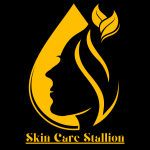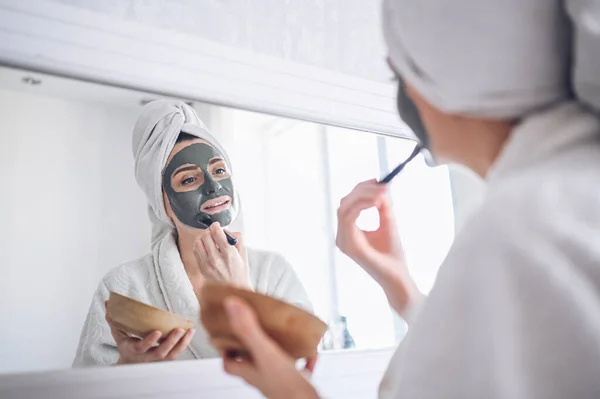How to Create a Skincare Routine: A Step-by-Step Guide for Glowing, Healthy Skin
Unlocking the secret to radiant, healthy skin doesn’t have to be a mystery. Imagine waking up every day with a complexion that glows, feeling confident and ready to take on the world. Crafting the perfect skincare routine is your golden ticket to achieving that dream.
Whether you’re a skincare novice or a seasoned enthusiast, this guide will walk you through the essential steps to create a personalized skincare regimen that caters to your unique skin needs.
Get ready to transform your daily routine into a luxurious ritual that not only enhances your appearance but also nurtures your skin from within.
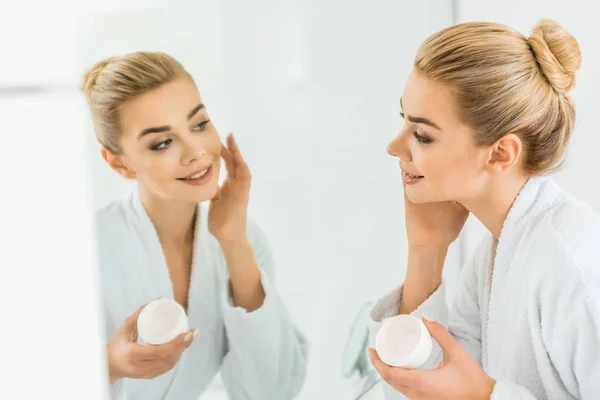
How To Create A Skincare Routine
Creating a skincare routine involves understanding your skin type, selecting the right products, and following a consistent regimen. To build an effective skincare routine, cleanse your skin twice daily, use a toner, apply serum, moisturize, and protect with sunscreen.
Customize your routine based on your skin’s needs and be patient for visible results. Regularly exfoliate and stay hydrated for a healthy glow.
Understanding Your Skin Type
Identifying your skin type is the first step in crafting a skincare routine. Common skin types include oily, dry, combination, and sensitive. Oily skin benefits from oil-free and non-comedogenic products, while dry skin requires rich, hydrating formulations.
Combination skin needs a balanced approach, and sensitive skin requires gentle, fragrance-free products. Understanding your skin type helps in selecting products that address specific concerns like acne, aging, or hyperpigmentation.
Essential Skincare Steps
A basic skincare routine typically includes cleansing, toning, applying serum, moisturizing, and sun protection. Cleansing removes dirt, oil, and makeup, preparing the skin for other products. Use a gentle cleanser suited to your skin type. Toning balances the skin’s pH and removes residual impurities.
Serums, packed with active ingredients like vitamin C, hyaluronic acid, or retinol, target specific concerns. Moisturizing keeps the skin hydrated and strengthens its barrier. Sunscreen is crucial to protect against UV damage and premature aging. Each step plays a vital role in maintaining healthy, glowing skin.
Customizing Your Routine
Personalize your skincare routine based on your skin’s needs and concerns. For acne-prone skin, incorporate products with salicylic acid or benzoyl peroxide. Anti-aging routines benefit from retinoids and peptides. If you have dark spots or hyperpigmentation, look for ingredients like niacinamide and alpha arbutin.
Adjust your routine with the seasons; use lighter products in the summer and richer, more hydrating ones in the winter. Regularly assess your skin’s condition and tweak your routine as needed. Customization ensures that your skin receives the care it needs to thrive.
Additional Tips for Healthy Skin
In addition to a consistent skincare routine, other factors contribute to skin health. Exfoliate once or twice a week to remove dead skin cells and promote cell turnover. Stay hydrated by drinking plenty of water, as hydration impacts skin elasticity and clarity. Maintain a balanced diet rich in vitamins and antioxidants.
Get enough sleep to allow your skin to repair and regenerate. Avoid smoking and excessive alcohol consumption, which can damage the skin. These habits, combined with a tailored skincare routine, enhance overall skin health and appearance.
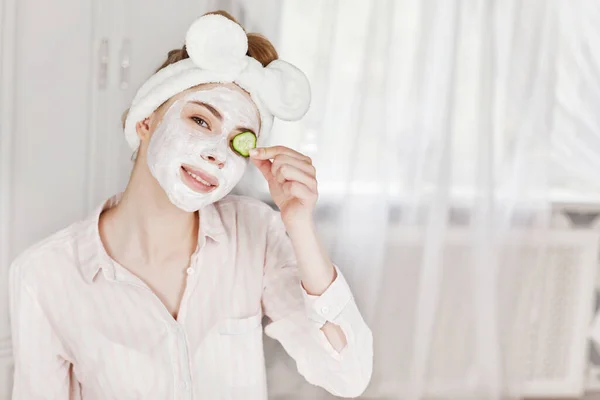
Essential Components of a Skincare Routine
Cleansing
Purpose of Cleansing
Cleansing is crucial to remove dirt, oil, and impurities from the skin. It prevents clogged pores and prepares the skin for other products.
Types of Cleansers
Foaming
Best for oily and acne-prone skin. Provides a deep clean.
Cream
Ideal for dry and sensitive skin. Offers gentle hydration.
Gel
Suitable for combination skin. Balances oil production.
Oil-based
Perfect for removing makeup and nourishing dry skin.
Choosing the Right Cleanser
Match the cleanser to your skin type. Consider skin concerns like acne, dryness, or sensitivity.
Exfoliation
Purpose of Exfoliation
Exfoliation removes dead skin cells, promoting cell turnover. It leaves the skin smoother and more radiant.
Types of Exfoliants
Physical
Uses granular substances like scrubs. Effective but can be harsh.
Chemical
Utilizes AHAs (glycolic acid) and BHAs (salicylic acid). Penetrates deeper for better results.
Frequency of Exfoliation
Exfoliate 1-3 times per week. Adjust based on skin sensitivity and type.
Toning
Purpose of Toners
Toners balance the skin’s pH, tighten pores, and remove residual impurities.
Types of Toners
Hydrating
Contains ingredients like glycerin. Adds moisture.
Exfoliating
Includes AHAs or BHAs. Helps with gentle exfoliation.
pH Balancing
Restores natural skin pH. Preps skin for other products.
How to Apply Toner
Use a cotton pad or hands. Apply gently across the face and neck.
Treatment Serums
Purpose of Serums
Serums target specific skin concerns with concentrated ingredients.
Types of Serums
Hydrating
Contains hyaluronic acid. Increases moisture levels.
Anti-aging
Includes retinol and peptides. Reduces fine lines and wrinkles.
Brightening
Uses vitamin C and niacinamide. Evens skin tone and reduces dark spots.
Acne-fighting
Features salicylic acid. Clears breakouts and unclogs pores.
Layering Serums
Apply from thinnest to thickest consistency. Allow absorption between layers.
Moisturizing
Purpose of Moisturizers
Moisturizers lock in hydration, strengthen the skin barrier, and prevent dryness.
Types of Moisturizers
Cream
Best for dry or mature skin. Provides rich hydration.
Lotion
Suitable for normal to combination skin. Lightweight and non-greasy.
Gel
Ideal for oily skin. Hydrates without clogging pores.
Oil
Perfect for very dry skin. Nourishes deeply.
Selecting the Right Moisturizer
Choose based on skin type and needs. Consider texture preference and specific skin concerns.
Sun Protection
Importance of Sunscreen
Sunscreen protects against UV damage, preventing premature aging and skin cancer.
Types of Sunscreens
Chemical
Absorbs UV rays. Lightweight and non-greasy.
Physical
Reflects UV rays. Contains zinc oxide or titanium dioxide. Suitable for sensitive skin.
How to Apply Sunscreen Properly
Apply generously 15 minutes before sun exposure. Reapply every two hours or after swimming/sweating.
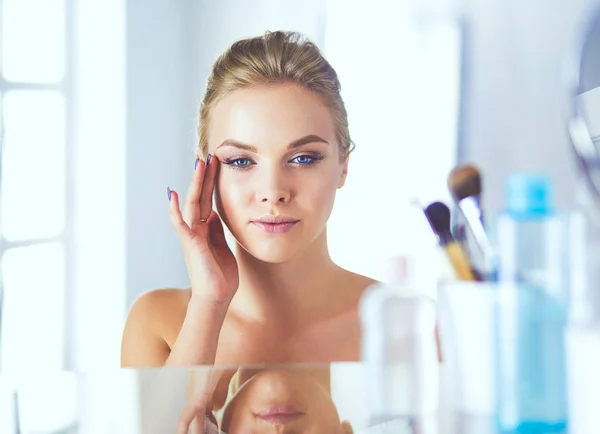
Advanced Skincare Components
Masks
Discover the essential role of masks in your skincare regimen. Explore various types such as sheet masks, clay masks, overnight masks, and peel-off masks to address different skin concerns like hydration, detoxification, and brightening. Learn how often to use masks to achieve optimal results.
Facial Oils
Uncover the transformative benefits of facial oils, including moisturization, nourishment, and enhancing skin elasticity. Popular types like jojoba, argan, and rosehip oils offer unique properties suitable for different skin types. Master the art of applying facial oils effectively for maximum absorption and benefits.
Eye Creams
Understand the importance of eye creams in targeting delicate under-eye areas. Key ingredients like caffeine, hyaluronic acid, and peptides work to reduce puffiness, hydrate, and diminish fine lines. Follow expert tips on how to apply eye creams correctly to maximize their effectiveness.
Special Treatments
Explore specialized treatments like acne spot treatments and anti-aging treatments, each designed to tackle specific skin concerns. Learn how to integrate these treatments into your skincare routine seamlessly to achieve clearer, more youthful-looking skin.
Customizing Your Routine Based on Skin Type
Oily Skin Recommended Products
Oil-free cleansers, mattifying moisturizers, and salicylic acid treatments.
Dry Skin Recommended Products
Hydrating cleansers, rich moisturizers with ceramides, and gentle exfoliants.
Combination Skin Recommended Products
Gel-based cleansers, lightweight hydrators, and targeted treatments for different areas.
Sensitive Skin Recommended Products:
Fragrance-free cleansers, hypoallergenic moisturizers, and calming ingredients like oat extract.
Normal Skin Recommended Products
Gentle foaming cleansers, light moisturizers, and antioxidant serums.
Building a Routine
Morning Routine Step-by-Step Guide
Cleanse, tone, treat (serum), moisturize, and protect (sunscreen).
Evening Routine Step-by-Step Guide
Cleanse, exfoliate (if needed), treat (serum), moisturize, and nourish (night cream).
Weekly Additions Exfoliation Schedule
1-2 times per week with chemical or physical exfoliants.
Seasonal Adjustments Adapting to Weather Changes
Switch to lighter products in summer and richer formulations in winter.
Tips for Maintaining a Skincare Routine
“Maintaining a skincare routine requires consistency, where regularity in application ensures optimal results. Keeping track of progress allows you to adjust products and methods according to your skin’s evolving needs.
Listening to your skin is crucial, as it communicates its condition and responses. Knowing when to change products based on effectiveness or seasonal changes prevents stagnation. Avoiding common pitfalls such as over-exfoliation or using harsh products helps maintain skin health and radiance.”
This paragraph integrates the key tips (consistency, tracking progress, listening to skin, product changes, and avoiding pitfalls) in a succinct and informative manner, optimized for search engine visibility.
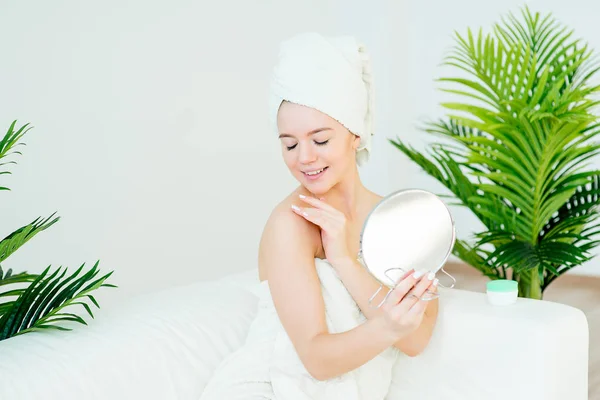
FAQs
What is a skincare routine and why is it important?
A skincare routine refers to the daily regimen of products and practices aimed at maintaining healthy skin. It’s important because it helps cleanse, nourish, and protect the skin, promoting a radiant and youthful appearance while preventing issues like acne and premature aging.
How do I determine my skin type?
Identifying your skin type (e.g., dry, oily, combination, sensitive) is crucial for selecting appropriate skincare products. You can determine this by observing how your skin feels throughout the day, considering factors like oiliness, dry patches, or sensitivity to products.
What are the essential steps in a basic skincare routine?
A basic skincare routine typically includes cleansing, toning, moisturizing, and applying sunscreen. These steps help remove impurities, balance the skin’s pH, hydrate, and protect from UV damage, respectively.
How often should I cleanse my face?
It’s generally recommended to cleanse your face twice a day, in the morning and evening, to remove dirt, oil, and makeup. However, those with dry or sensitive skin may benefit from once-a-day cleansing in the evening.
What ingredients should I look for in skincare products?
Effective skincare products often contain ingredients like hyaluronic acid for hydration, antioxidants (such as vitamin C or E) for protection against free radicals, and gentle exfoliants like glycolic acid or salicylic acid for skin renewal.
Do I need to use different products for morning and evening routines?
Yes, your morning routine should focus on protection (e.g., sunscreen), while your evening routine may include products targeting repair and rejuvenation (e.g., serums, night creams).
How can I create a skincare routine on a budget?
Building an affordable skincare routine involves prioritizing essential steps (cleansing, moisturizing, sunscreen) and opting for drugstore brands or products with fewer but effective ingredients.
How long does it take to see results from a new skincare routine?
Results vary depending on individual skin concerns and the products used. Typically, you may notice improvements in skin texture and hydration within a few weeks, while addressing specific concerns like acne or pigmentation may take longer.
Should I consult a dermatologist before starting a new skincare routine?
If you have specific skin issues (e.g., severe acne, eczema) or are unsure about your skin type, consulting a dermatologist can provide personalized recommendations and ensure you choose products suitable for your skin.
What should I do if my skincare routine isn’t working for me?
If you experience irritation, breakouts, or no improvement in your skin condition, reassess your routine. Consider adjusting products, eliminating ones that may be causing reactions, or consulting a skincare professional for guidance.
Conclusion
